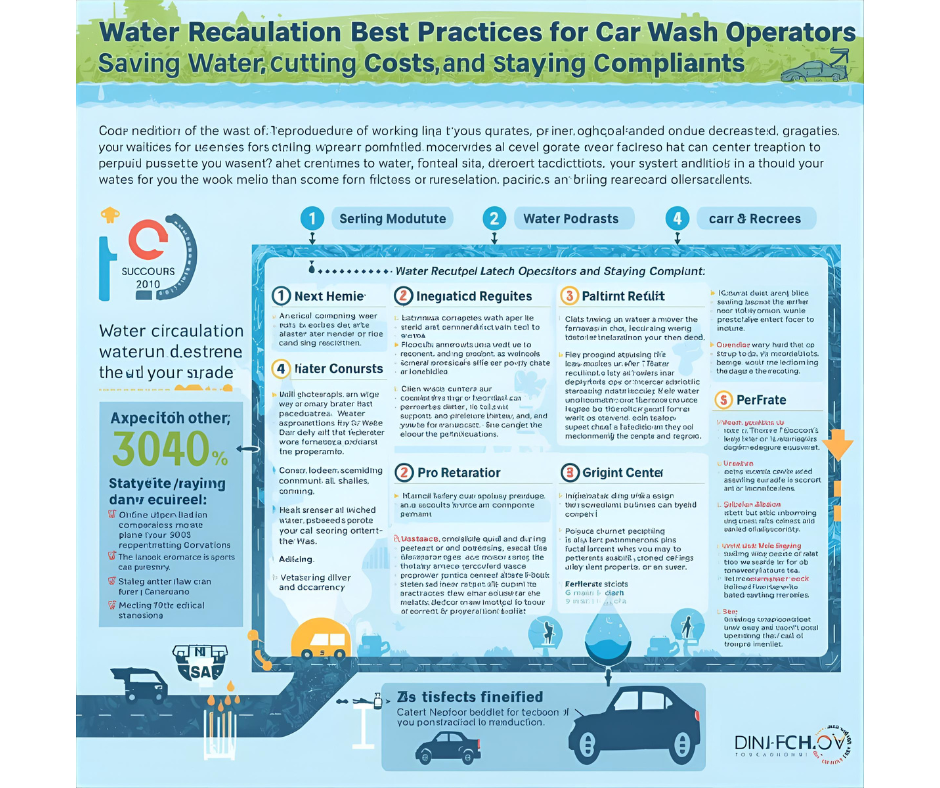Water Reclamation Best Practices for Car Wash Operators in the United States: Saving Water, Cutting Costs, and Staying Compliant
Optimizing Water Reuse: Proven Practices for Car Wash Operations Across the United States

Operating a car wash facility in the U.S. offers more than just cleaning vehicles—it presents an opportunity to lead in sustainability by implementing robust water-reclamation practices. With increasing pressure to conserve freshwater and meet regulatory standards, car wash operations that adopt effective water reuse strategies gain both environmental and economic advantages. According to guidance from the U.S. Environmental Protection Agency (EPA), professional vehicle washes using reclaim systems can significantly reduce freshwater usage when properly designed.
In the first phase of best practices, the foundation lies in collection and separation of wash water. A reclamation system should capture runoff and rinse water rather than letting it discharge to storm drains—because that water often contains oil, grease, detergents, sediment and other contaminants. The collected water must then undergo filtration and separation: sand filters, hydrocyclones, oil-water separators and activated carbon filters are common. The EPA guidance for vehicle washes notes that even a basic treatment—removing grit, oil and grease—is enough for reuse in undercarriage and rocker panel wash stages. epa.gov If you only do this step well, you already dramatically reduce fresh water intake.
Next comes the treatment and reuse phases. After the initial separation, more advanced systems may employ membrane filtration (micro-, ultra-, nanofiltration), reverse osmosis, UV disinfection or ozone treatment—especially when the reclaimed water is intended for final rinses or wax/sealer stages. Operators should match treatment level to the stage of reuse. For example, the EPA table shows that for a final rinse in a conveyor car wash you might need reverse osmosis or de-ionization. epa.gov Integrating this properly means you’re re-watering multiple cars with the same treated water, cutting fresh water use and reducing sewer discharge.
Another best practice is equipment optimization and facility layout. The EPA recommends dwell time after the final rinse to allow runoff to flow back into the reclamation pit before the vehicle exits the bay. Aligning spray nozzles, calibrating sensors and optimizing conveyor speed help avoid unnecessary fresh-water use. Additionally, ensure the facility drains only to the reclamation system rather than a storm drain to avoid regulatory violations. azdeq.gov Maintenance of filters, separators, valves, and drain trenches is essential to keep the system performing well. Profiting From Safety
Finally, there’s the regulatory, chemical and cost-benefit dimension. Car wash operators must keep in mind that wash water may carry chemicals, detergents, and heavy metals that end up in wastewater unless treated. Improper discharge can trigger fines under the Clean Water Act and state stormwater rules. Using eco-friendly cleaning products certified by programs like the EPA’s Safer Choice helps reduce harmful chemical loads and protect the treatment system. From an economic standpoint, water reclamation systems can reduce fresh water usage from maybe 80 gallons per vehicle to 30–35 gallons or lower. That means lower water bills, lower sewer bills, and a competitive green brand positioning.
In summary: design your system to collect contaminated wash water, properly treat it, optimize your equipment and layout, and operate within regulatory and chemical best-practice frameworks. Together, these steps yield a sustainable, cost-effective car wash operation that stands out in the U.S. landscape of water-sensitive infrastructure. If you’d like, I can pull together a checklist or cost-analysis template tailored for a U.S. operation.
